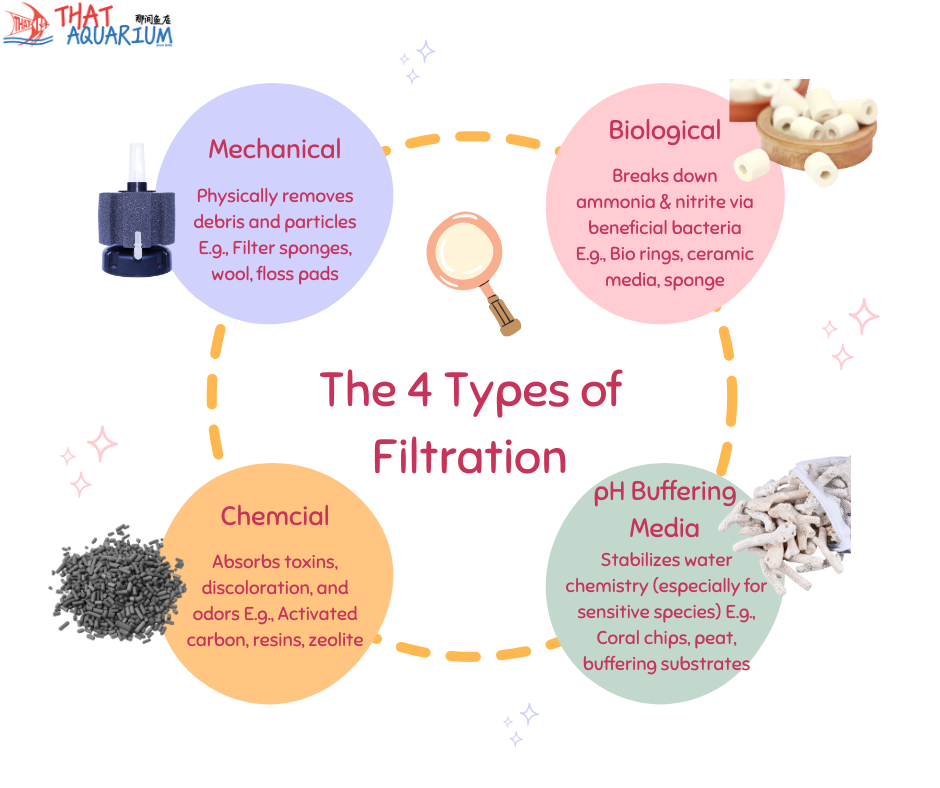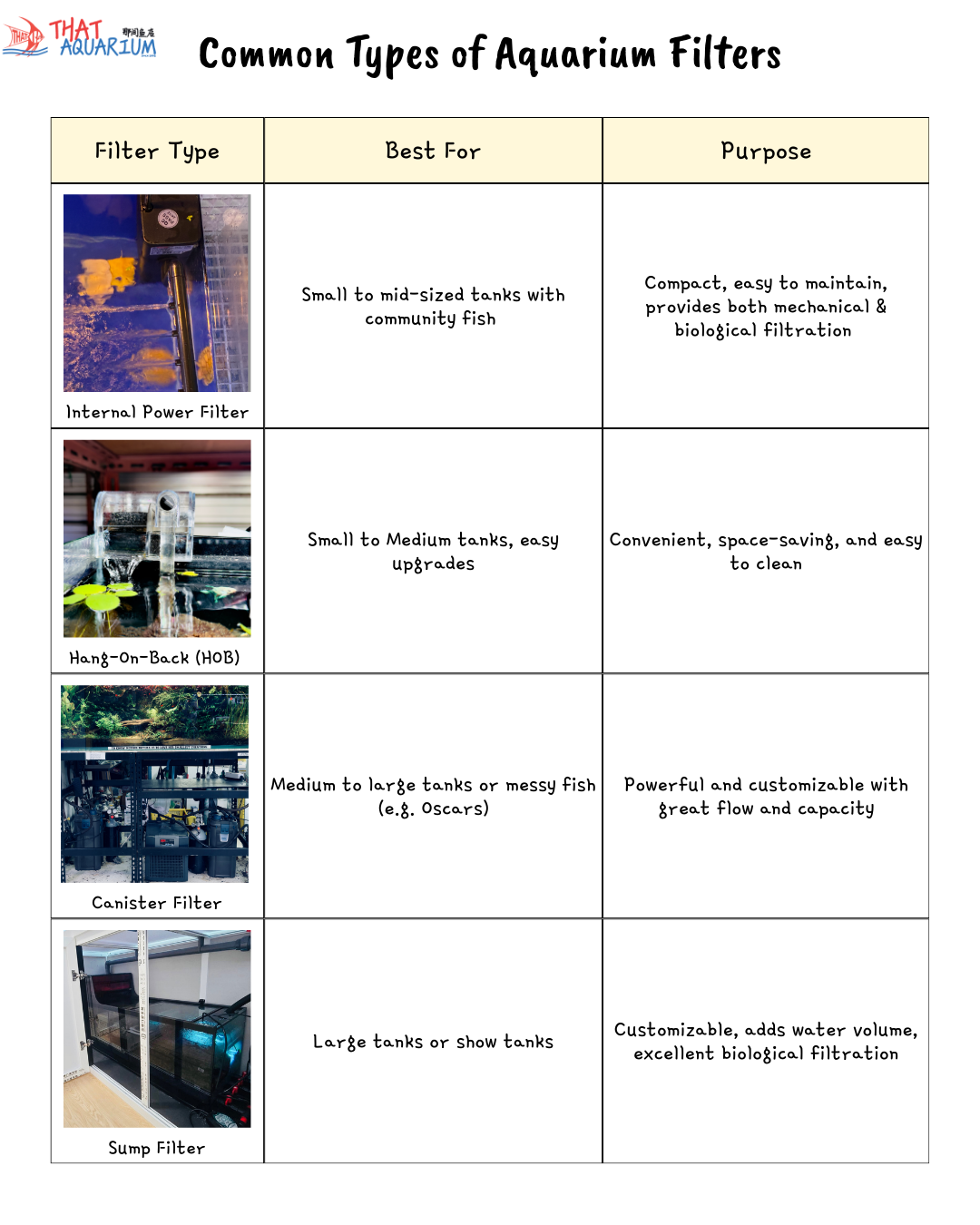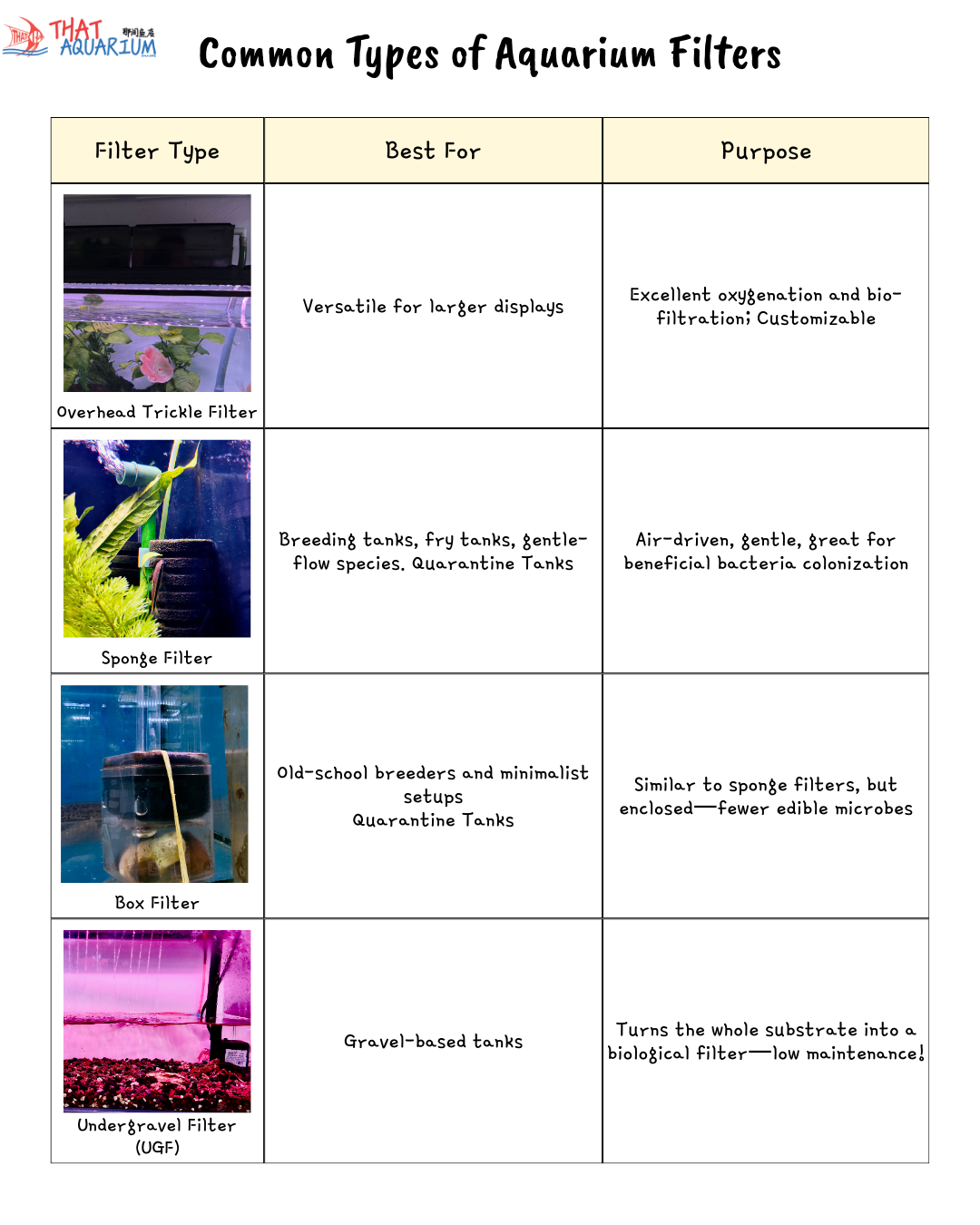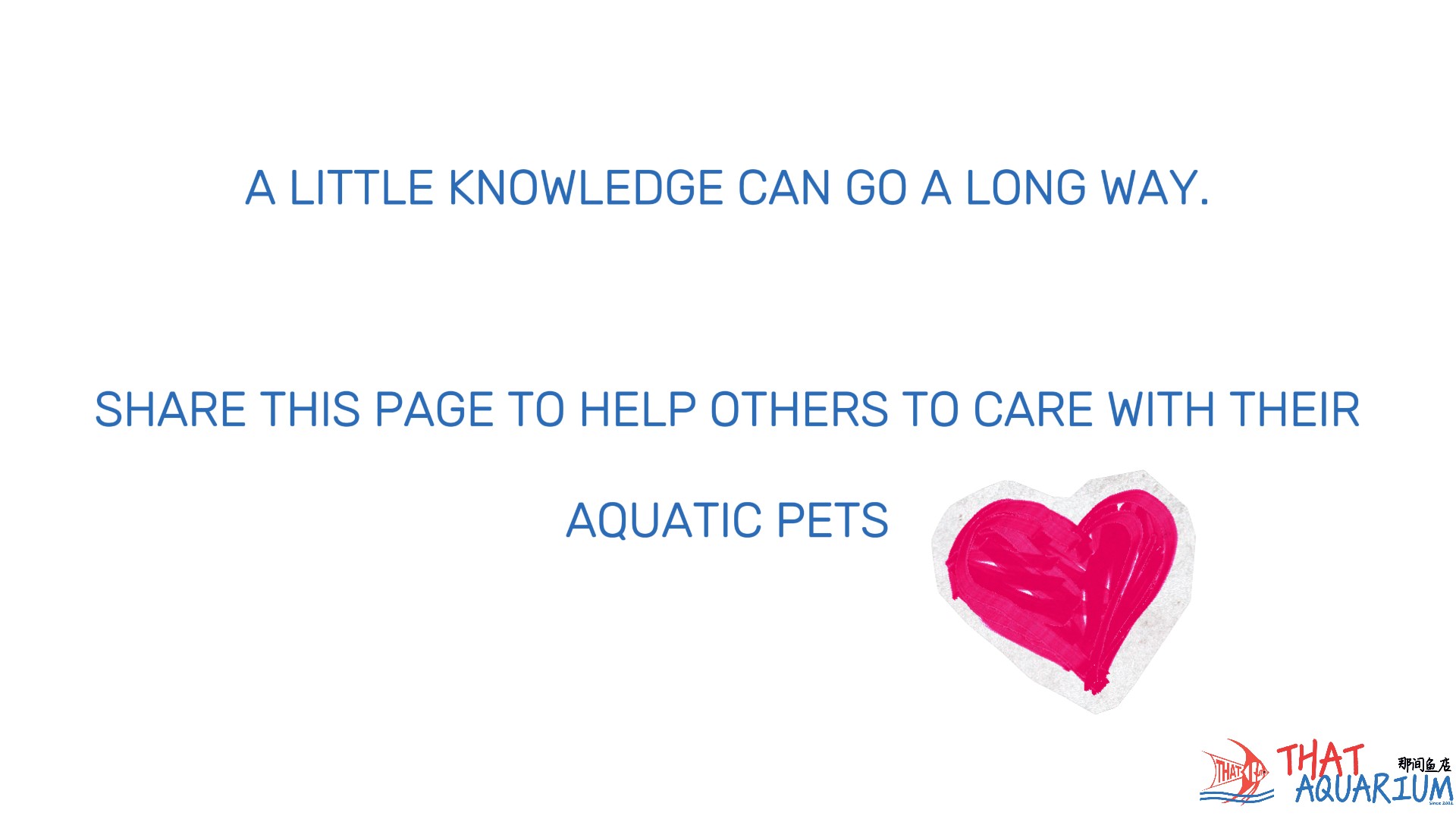
Learning Community > Aquarium Setup > 2. Filter
“The Heart and Kidneys of Your Tank”
Let’s talk filters
Think of the aquarium filter as the heart and kidneys of your setup. It keeps the water clean, oxygenated, and safe for your fish—by filtering out waste and circulating clean water throughout the tank. Simple in theory, but there’s a lot more beneath the surface (literally).
When choosing a filter, keep two key factors in mind:

💡 Pro Tip: A well-rounded filter should include at least mechanical and biological filtration. Chemical and buffering media are optional but helpful depending on your livestock and water source.
Let’s explore the most common filter types you’ll find in the market.


Let’s make this super relatable:
At our stores, we’ve tested and trusted just about every filter type out there. Whether it’s a simple sponge setup or a multi-tier sump with reactors and UV sterilizers, we always match filtration to the specific needs of your fish, plants, and tank goals—not just the latest gadget.
💡 Pro Tip: A “bigger” filter isn’t always better. Choose one that matches your tank’s load, offers balanced filtration, and fits your maintenance style.
And if you’re not sure where to start? That’s what we’re here for. From custom filtration builds to complete setups, we’ve got your back.
✅ Aquarium filters do more than clean—they support life in the tank.
✅ Understand the 4 types of filtration: mechanical, biological, chemical, and pH buffering.
✅ Match your filter to your fish species, tank size, and stocking level.
✅ Some filters are better for strong currents, others for gentle, stress-free environments.
✅ We offer custom setups, advice, and installation—just speak to our team in-store!
Need help selecting or customising your filter? Want to know which media best supports your fish or water source? Talk to our friendly aquarists or head down to any of our stores—we’ll guide you step by step, from filtration to full tank setups.
👉 Next Up: We’ll explore substrate —because it’s the foundation of the entire underwater ecosystem.
Proudly presented by our That Aquarium Digital Team, where innovation meets aquatic excellence.
Published on 13 June 2025
Author: Kelvin Phua
Illustrator(s): Chai Minyu, Abbie Tan


At That Aquarium, we believe that exceptional CARE is the foundation of our success. We are committed to treating each customer and every aquatic life with genuine compassion and respect. Our dedication goes beyond providing quality products and services; we strive to create a nurturing environment that delivers a therapeutic experience for our customers, our aquatic life, and our team. Guided by principles of integrity, forward-thinking mindset, and continuous improvement, we aim to foster a harmonious and supportive atmosphere. Our focus is on ensuring that every interaction reflects our dedication to excellence and our care for both our people and our community.
That Aquarium